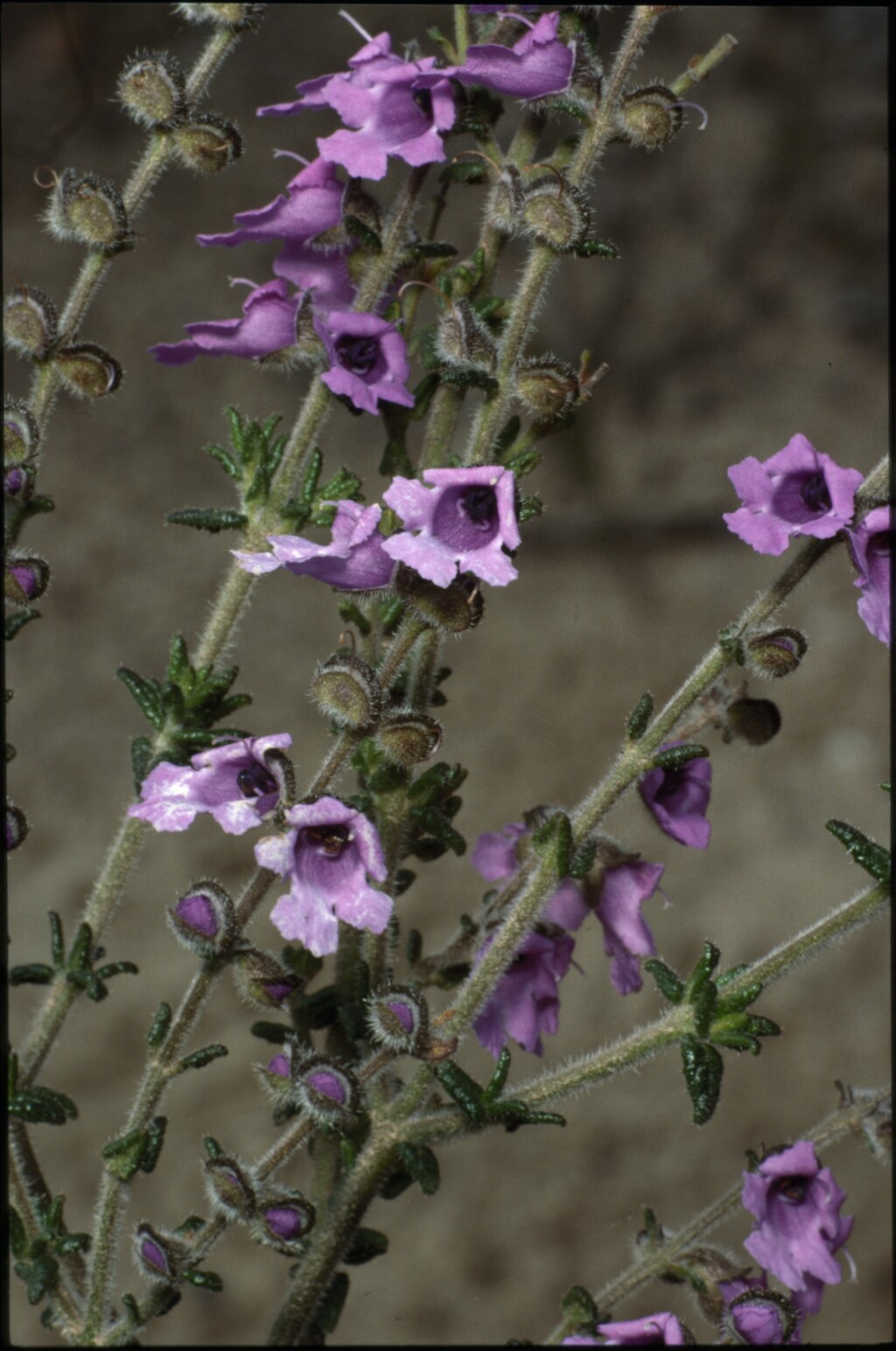Prostanthera hirtula
F.Muell. ex Benth. Hairy Mint-bushSpreading shrub, 0.4–2 m high, to 2.5 m diam., strongly aromatic; branches densely covered with spreading hairs. Leaves narrowly ovate to narrowly elliptic, 10–30 mm long, 1.5–6 mm wide, mid-green, moderately to densely covered in c. spreading, coarse, rigid hairs on upper surface, densely glandular on lower surface, base shortly attenuate, margin entire, recurved to strongly revolute, apex subacute; petiole 0.5–2 mm long. Flowers in a terminal racemose inflorescence that is often leafy basally; bracteoles persistent, c. 2 mm long, 0.5–0.6 mm wide. Calyx 5–7 mm long, tube c. 3 mm long, adaxial lobe 2–4 mm long (slightly enlarged in fruit); corolla dark mauve, 8–10 mm long; anther appendage c. 0.5 mm long. Flowers spring.
VVP, GipP, Gold, CVU, GGr, DunT, NIS, EGL, EGU, HSF, HNF, VAlp. Scattered but uncommon, usually in elevated rocky sites in woodland and open-forest communities.
Apparent hybrids between P. hirtula and P. rhombea are known from the Wellington River valley, near Mt Margaret.
Conn, B.J. (1999). Lamiaceae. In: Walsh, N.G.; Entwisle, T.J., Flora of Victoria Vol. 4, Cornaceae to Asteraceae, pp. 418–459. Inkata Press, Melbourne.
 Spinning
Spinning
